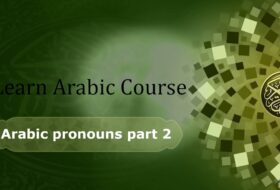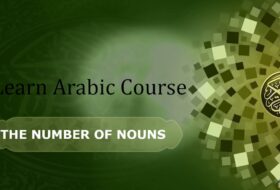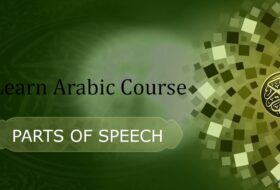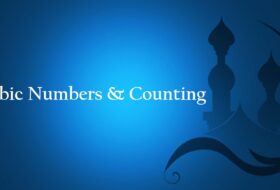Arabic pronouns part 1 الضمائر
The Arabic pronoun is a word used in place of a noun, (هو) he (هى) she (هم)they (أنت) you (نحن) we (ها) her (ك) your (ى) My – etc ……
They are of two kinds:
The Detached Pronouns, called (ضمائر منفصلة) هو – he like هو طالب he is a student.
The Attached Pronouns, called (ضمائر متصلة) ه – his like طالبة his student.
The Detached Personal Pronouns (ضمائر منفصلة)


Note:
Concentrate on the underlined forms only in the beginning, and skip over the remaining forms as these are not frequently used in the Holy Quran.
The Attached Pronouns to a noun with Possessive Relations (ضمائر متصلة)

Note:
Concentrate on the underlined forms only in the beginning, and skip over the remaining forms as these are not frequently used in the Holy Quran.
Pronouns Attached to a Verb:
Pronouns attached to a verb become its Direct Object, (ضرب) means ‘he struck’, ‘he’ is a subject and ‘struck’ is a verb; with the addition of an attached pronoun (هـ) ‘him’ would become the object of the verb (ضرب) Like:
Pronouns Attached to a Verb as its Direct Object

Note:
Concentrate on the underlined forms only in the beginning, and skip over the remaining forms as these are not frequently used in the Holy Quran.
Other examples:
- يدى my hand الكتاب فى يدى the book is in my hand.
- يداى my two hands يداى لى المكتب my two hands are on the table.
- بين يدى literally between my hands in front of me الشجرة بين يدى the tree is in front of me (على) on me or my responsibility حسابه على ‘his account is on me.
- لديهم with them/by them الكتاب لديهم the books are with them.
- لى to me or for me لى عملى my action is for me’ i.e. I am responsible for my action.
- لك ‘to you or for your ولكم عملك and your action is for you’ i.e. you are responsible for your action.
- له to him, for him له الملك وله الحمد to Him (Allah) belongs the universe and for Him is all the Praise.













